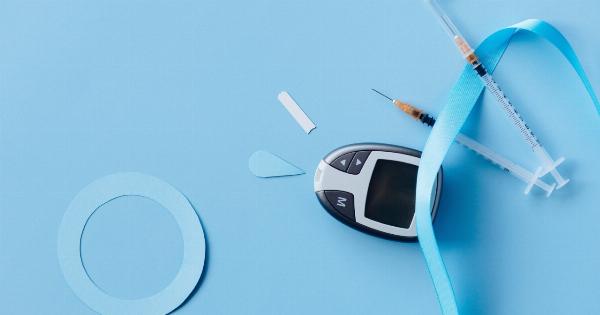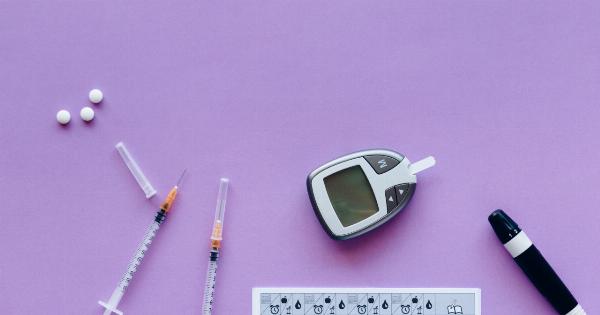Insulin therapy is an essential component in the management of diabetes, especially type 1 diabetes.
Patients with type 1 diabetes lack the ability to produce insulin on their own, making it necessary to administer insulin to maintain blood sugar levels within a safe range. Traditional insulin delivery methods, including injections and pumps, can be cumbersome, painful, and inconvenient for patients. However, with the advent of nanotechnology, researchers are exploring new ways to deliver insulin using nanoparticles.
What are Nanoparticles?
Nanoparticles are extremely small particles with a size range of 1-100 nanometers, which can exist as either organic or inorganic molecules.
They possess unique physical and chemical properties, including high surface area to volume ratio, increased reactivity, and tunable surface chemistry. These properties make nanoparticles ideal carriers for drug delivery due to their ability to penetrate cell membranes, cross biological barriers, and interact with biological systems at the molecular level.
Why use Nanoparticles in Insulin Delivery?
The use of nanoparticles in insulin delivery can overcome several limitations of traditional insulin therapy. Nanoparticles can protect insulin from degradation in the body, prolonging its therapeutic effect.
They can also improve insulin absorption, making it more effective at reducing blood sugar levels. Additionally, nanoparticle-based insulin delivery systems can be engineered to respond to changes in blood glucose levels, releasing insulin only when it is needed.
Types of Nanoparticles used in Insulin Delivery
A wide variety of nanoparticle systems have been explored for insulin delivery, including liposomes, dendrimers, polymeric nanoparticles, gold nanoparticles, and silica nanoparticles.
Studies have shown that these nanoparticles can improve insulin stability and efficacy while reducing the risk of hypoglycemia.
Liposomes
Liposomes are spherical vesicles composed of phospholipid bilayers that can encapsulate insulin. They can be modified to target specific cells or tissues, improving insulin delivery.
A study published in the Journal of Controlled Release demonstrated that liposomal insulin formulations improved blood glucose control in diabetic rats compared to traditional insulin injections.
Dendrimers
Dendrimers are branched, tree-like molecules that can encapsulate insulin and carry it to target cells.
A study published in the Journal of Nanoparticle Research showed that dendrimer-based insulin delivery improved insulin efficacy and reduced the risk of hypoglycemia in diabetic rats compared to traditional insulin injections.
Polymeric Nanoparticles
Polymeric nanoparticles are composed of biodegradable and biocompatible polymers that can encapsulate insulin and release it in a controlled manner.
A study published in the Journal of Diabetes Science and Technology showed that polymeric nanoparticles improved insulin absorption and reduced the risk of hypoglycemia compared to traditional insulin injections.
Gold Nanoparticles
Gold nanoparticles can enhance insulin delivery by increasing insulin uptake by cells.
A study published in the Journal of Nanobiotechnology demonstrated that gold nanoparticle-based insulin delivery improved blood glucose control in diabetic rats compared to traditional insulin injections.
Silica Nanoparticles
Silica nanoparticles can increase insulin stability and prolong its therapeutic effect.
A study published in the Journal of Colloid and Interface Science demonstrated that silica nanoparticle-based insulin delivery improved insulin absorption and reduced the risk of hypoglycemia compared to traditional insulin injections.
Challenges and Future Directions
Despite the promising results from nanoparticle-based insulin delivery studies, several challenges remain. The first challenge is the safety of the nanoparticles themselves, as certain nanoparticles may have toxic effects on cells or tissues.
Additionally, further studies are needed to optimize the nanoparticle size, shape, and surface chemistry for insulin delivery. Finally, researchers must address the issue of nanoparticle clearance from the body, as prolonged exposure to nanoparticles may increase the risk of toxicity.
Overall, nanoparticle-based insulin delivery is a promising avenue for the treatment of diabetes. With continued research and development, nanoparticle systems may offer a more convenient and effective alternative to traditional insulin therapy.























